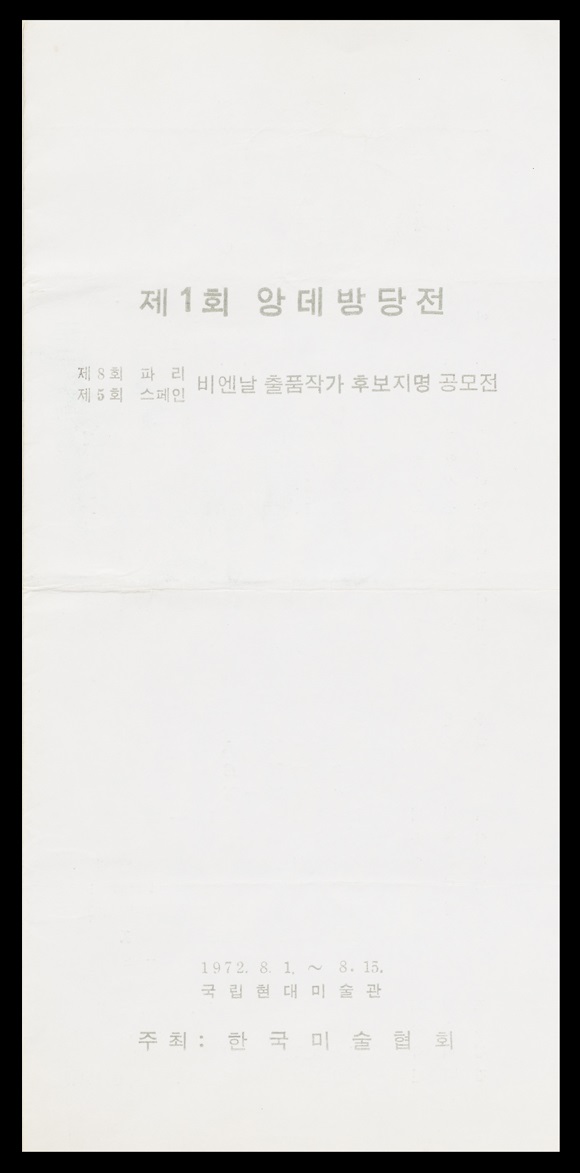
The first Independants Exhibition, Leaflet, 1972, MMCA Art Research Center Collection
Independants (1972)
* Source: Multilingual Glossary of Korean Art. Korea Arts Management Service
Related
-
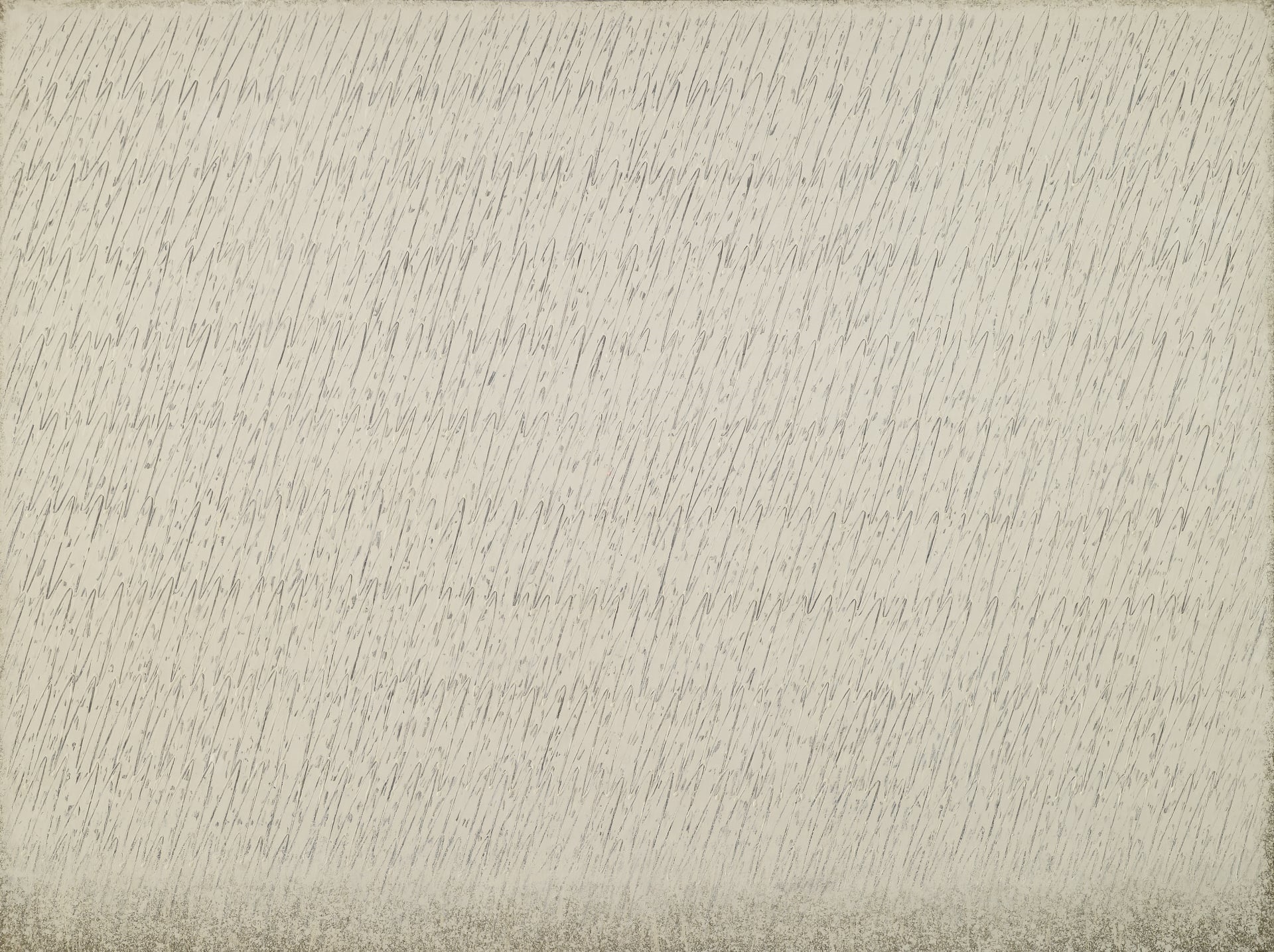
Park Seo-Bo
Park Seo-Bo(1931-2023, real name Park Jaehong) belongs to the first generation of artists who received art education in Korea after Korea’s liberation from Japan. He was a leading figure in Art Informel and Dansaekhwa. He was born in Yecheon, Gyeongsangbuk-do Province. He majored in Western painting in the College of Fine arts at Hongik University and graduated in 1955. He served as a professor at Hongik University and the board president of the Korean Fine Arts Association (Hanguk misul hyeophoe). Park made his debut as a painter in 1956 through the Four Artists Exhibition that declared resistance to the National Art Exhibition and the established generation. After presenting abstract expressionist work completely different from the established art at the third Hyundae Fine Artists Association exhibition in 1958, he led the Art Informel movement until the mid-1960s. In the 1970s, he headed large-scale special exhibitions, including Independants, the Seoul Contemporary Art Festival, Ecole de Séoul, and Korea: Facet of Contemporary Art. He also played a key role in establishing “Dansaekhwa” as a style of Korean painting in the 1970s. His oeuvre can be divided into three periods. The first period (late 1950s–mid 1960s) is referred to as the Art Informel period, during which Park depicted the post-war situation with distorted and deconstructed human forms, dark colors, and rough matière, particularly in the Primordials series. During the second period (late 1960s–early 1970s), he focused on the modernization of tradition, presenting optical and geometric abstraction with five colors representing the five cardinal directions as the dominant compositional element under the thesis of hereditarus. During the third period (1970s–2023), which is known as the period of monochrome painting, he presented the Ecriture series, in which performance was fundamental to his creation. The Ecriture series can be divided into two periods: before and after year 1982. In the former period, Park repeatedly applied milky oil paint to a canvas and before it dried, drew lines with a pencil or a tool with a sharp tip, thus leaving traces of this act on the canvas. In the latter period, he used water-based paints instead of oil-based paints in an effort to more directly capture his emotions with bright hues inspired by the colors of nature. Until his death, he sought to build the identity of Korean art through various methodologies within a single thesis of ecriture and elevated Dansaekhwa to an international level.
-
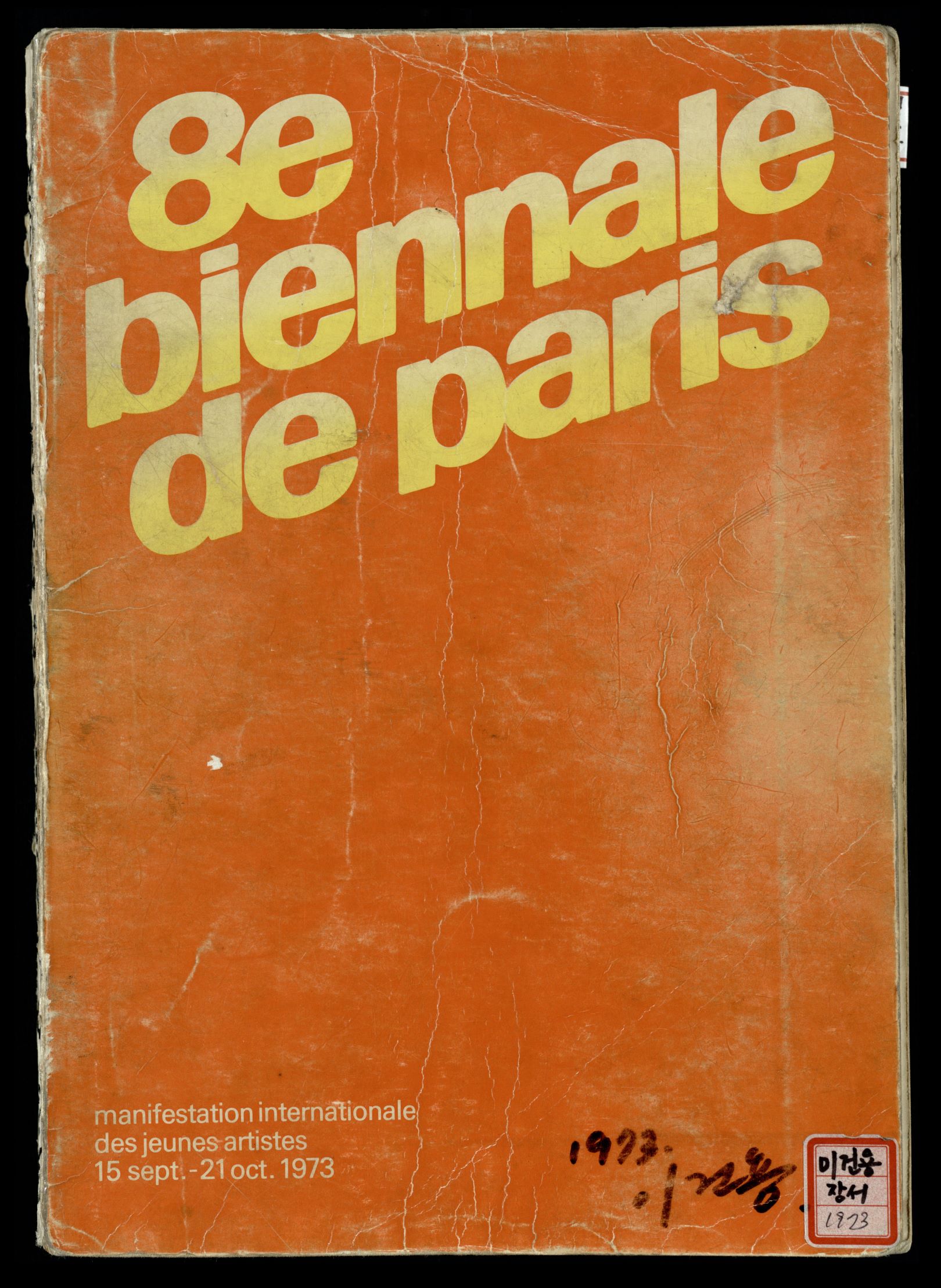
Paris Biennale
The Paris Biennale was an international art exhibition held at the Musée d’Art Moderne de la Ville de Paris from 1959 to 1985. The exhibition only accepted works from younger artists aged 20 to 35. Artists could submit to different categories, such as painting, sculpture, print, and drawing as long their works were created within the four years prior to submission. Unlike other Biennales, the Paris Biennale did not award any prizes. Instead, the committee selected specific works from each genre and offered grants and exhibition opportunities to the selected artists. Korean artists were invited to the first Paris Biennale in 1959, but they only began to participate from the second Paris Biennale in 1961. The committee of the Hyundae Fine Artists Association [Hyeondae misulga hyeopoe], delegated by the Korean Minister of Education, selected participating artists, such as Chang Seongsoun, Chung Changsup, Cho Yongik, and Kim Tschang-yeul for the second; Park Seobo, Youn Myeungro, Choi Kiwon, Kim Bongtae for the third; and Chung Sanghwa, Ha Chonghyun, Jeong Yeong-il, Lee Yangno, Choi Manlin, Park Chongbae, and Kim Chonghak for the fourth. However, after the seventh Biennale in 1963, the Korean Artists Association [Hanguk misul hyeopoe] began to question the fairness of the selection process, and the committee began to invite public submissions from the eighth Biennale onward. The Paris Biennale became a new turning point for Korean artists of the 1960s Art Informel generation by providing an opportunity for them to experience and experiment with new styles.
-
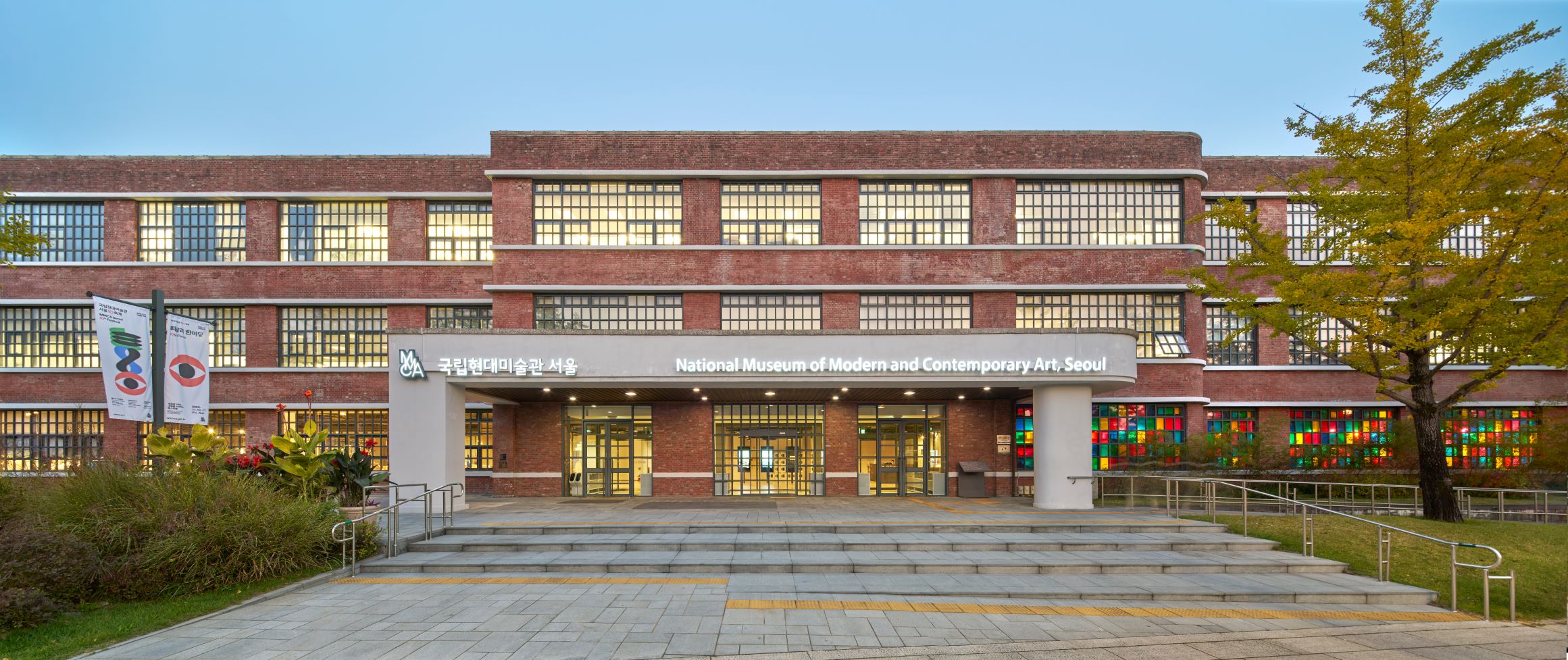
National Museum of Modern and Contemporary Art, Korea (MMCA)
A national museum established in 1969 that researches, collects, and exhibits modern and contemporary art. As of 2018, there are branches in Gwacheon, Deoksugung, Seoul, and Cheongju. When first established, the National Museum of Modern Art (now MMCA) was located within Gyeongbokgung palace. In 1973, the museum moved to the East Wing of the Deoksugung Seokjojeon building. Then, in 1986, the museum moved to its current location in Gwacheon, to occupy a new building equipped with an outdoor sculpture exhibition space, and has since opened a new chapter in Korean art. The perceived need for a space to focus specifically on Korean contemporary art led to the establishment of further site, the National Museum of Contemporary Art, Deoksugung in 1998. In November 2013, a further demand for contemporary art exhibitions led to the establishment of another Seoul branch being created in the Defense Security Command building in Sogyeok-dong, Jongno-gu, which has since its inception engaged in multifaceted exhibitions of both domestic and overseas contemporary art. Also, as a further component of the MMCA complex, a disused tobacco factory in Cheongju was remodeled to provide a home to the National Art Storage Center.
Find More
-
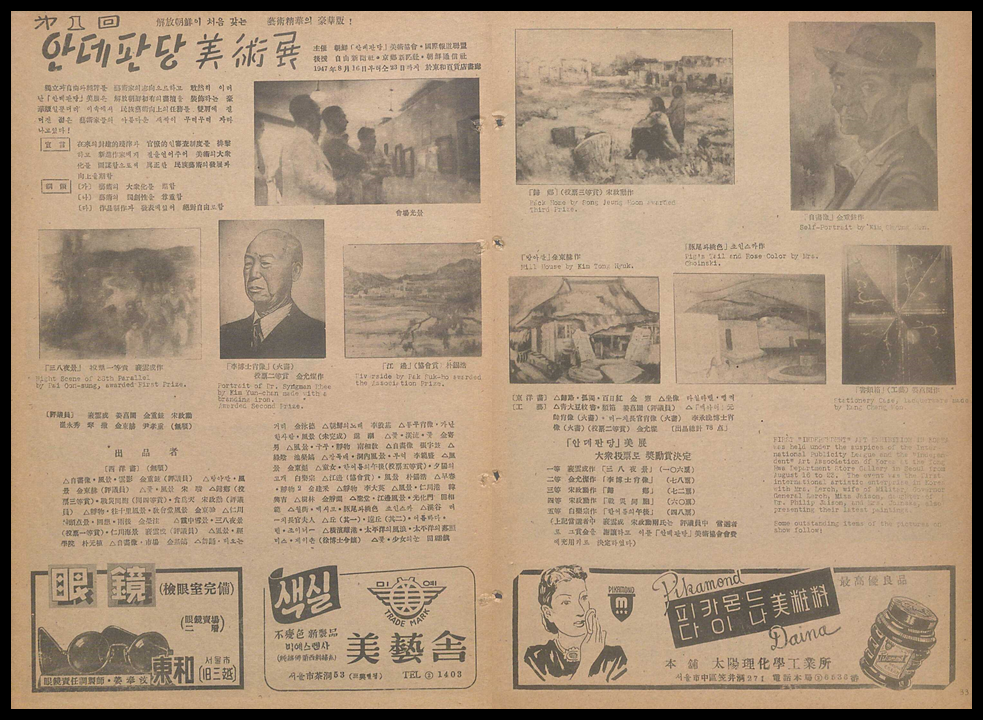
Indépendant Exhibition (1947)
An art exhibition jointly hosted by the Joseon Independent Art Association and the International Publicity League [Gukje bodo yeonmaeng] from 16 to 23 August 1947, and jointly sponsored by Jayu Shinmun and Kyunghyang Shinmun. Pai Unsoung and Song Jeong-hun organized the exhibition as representatives of the Joseon Independent Art Association. From August 10 to 14, the exhibition accepted paintings, sculptures, and crafts under the principle that there would be no review process. Pai Unsoung emphasized a critique of the limitations of enlightenment orientated movements led by the Art Alliance as well as a rejection of the remnants of feudalistic systems and the bureaucratic judging system. Song Jeong-hun criticized the post-independence attitudes of the art establishment, particularly the dominant ivory-tower perspective on art and the use of art as a tool of political propaganda. He sought to engage in artistic endeavors that were not beholden to any organizations. The two planned to hold yearly exhibitions and open a research institute, which in turn would host symposiums and art classes, but the exhibition was discontinued after the first incarnation. Following a popular vote that was open to the public, the Joseon Independent Art Association awarded the Daejung Jangryeosang to Pai Unsoung's 3.8 Nightscape, Kim Yunchan's Hwahwa, Song Jeong-hun's Homecoming and Jeonjae Dongpo, and Baek Rakjong's Midsummer Afternoon.
-
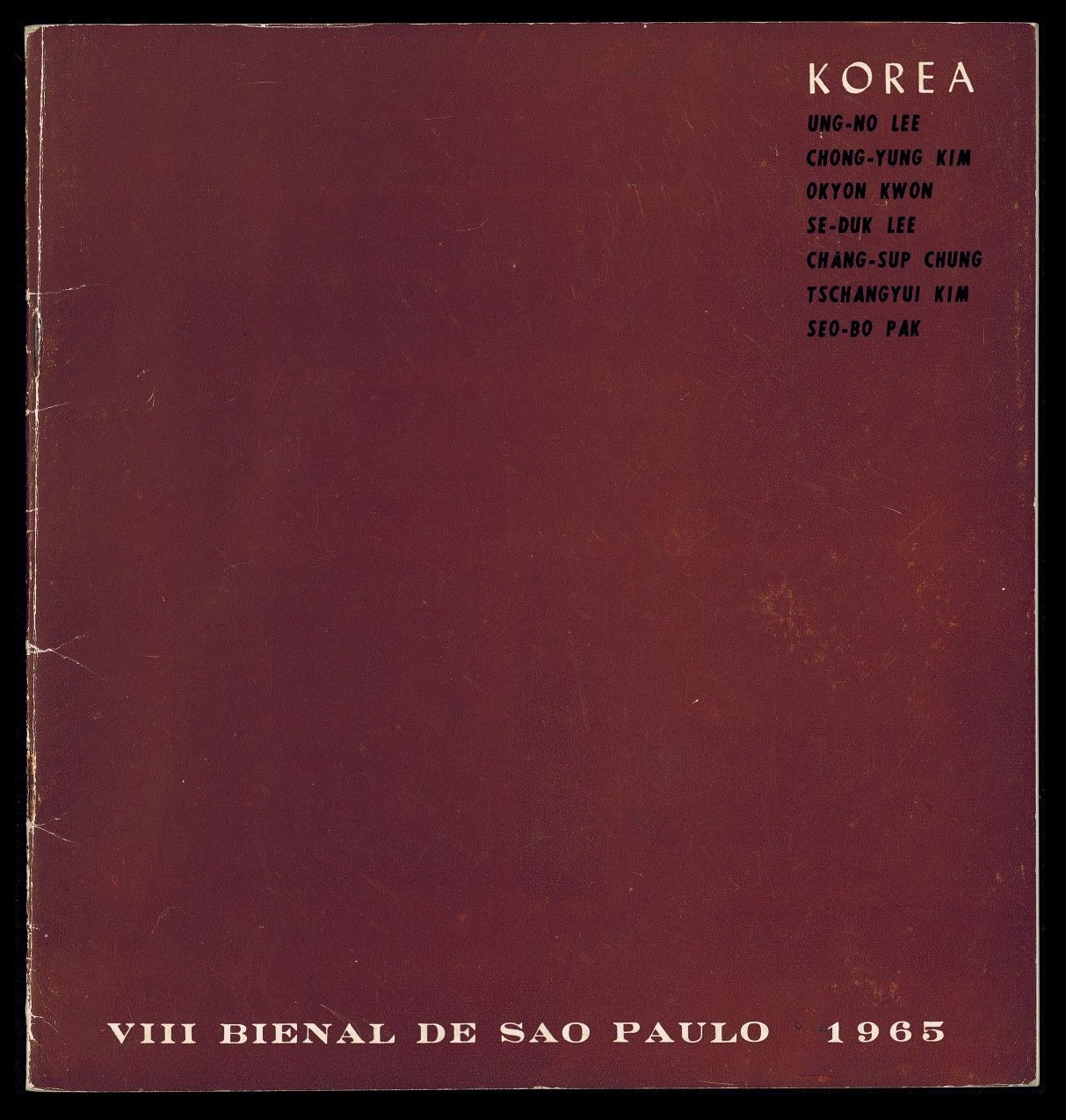
Sao Paulo Art Biennial
The Sao Paulo Art Biennial is an international exposition which started in 1951. The Sao Paulo Museum of Modern Art was the main venue for the event until 1957 when it moved to Ciccillo Matarazzo Pavilion. The exposition has the second longest history next to the Venice Biennale, and shares similar features with Venice, regarding the commissioner system and the use of themed exhibitions. South Korea expanded cultural exchange programs within the program since diplomatic relations were established in 1959 and began to officially participate in the Biennales after 1963. Kim Whanki, the chairman of the board of the Korean Art Association, served as the first commissioner in 1959, and seven artists including Yoo Youngkuk, Kim Youngjoo, Kim Kichang, Yoo Kangyul, Han Yongjin, Suh Seok, and Kim Whanki himself, submitted works to the exhibition. Their art pieces were previewed at the Korean Information Service Gallery in Seoul between June 14 and June 16. Over the last 70 years, Kim Bokyoung, Seo Seong-rok, Kim Youngho, Yoon Jinsup, and Oh Sang-Ghil have all been appointed as commissioners to the Biennale.
-
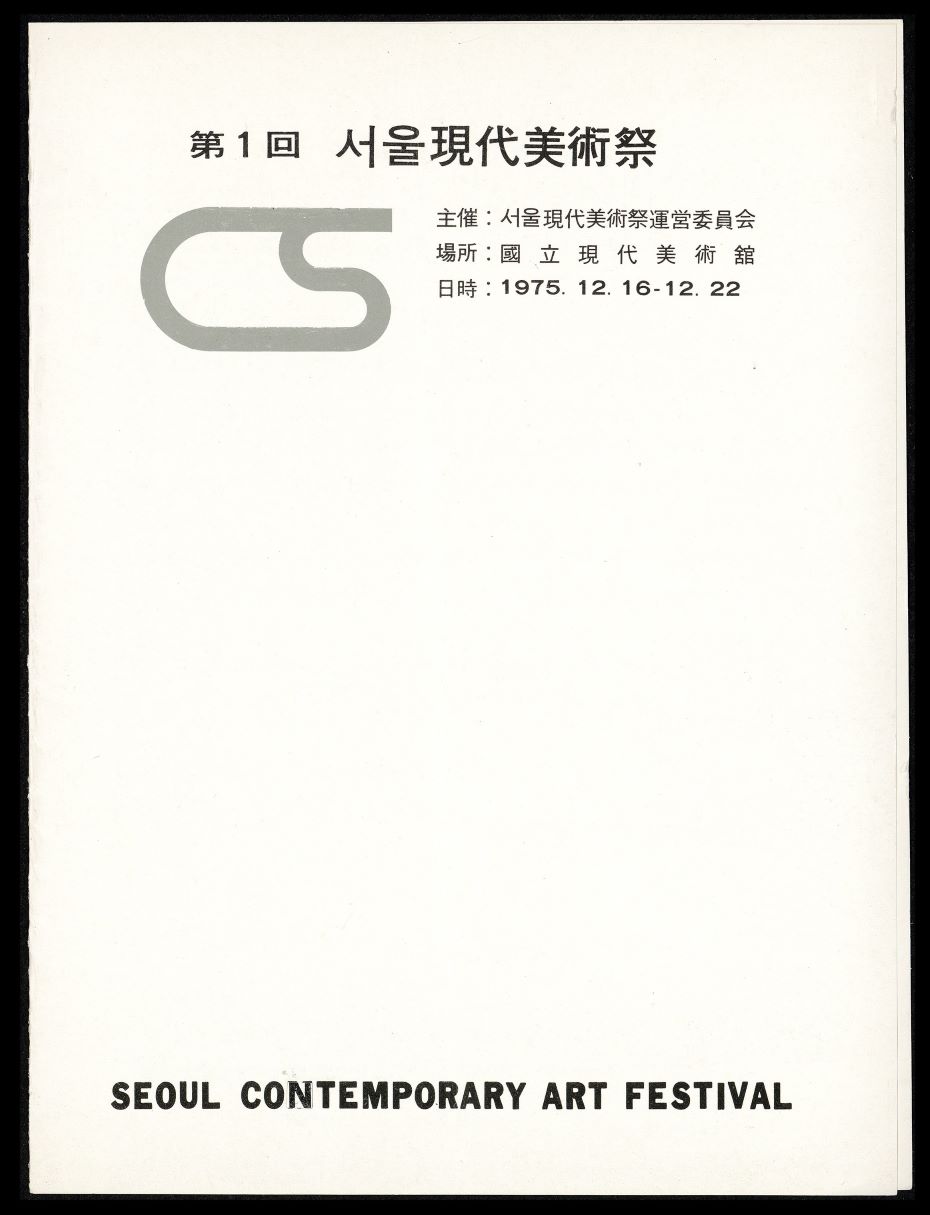
Seoul Contemporary Art Festival
The Seoul Contemporary Art Festival was a large-scale art festival held since 1975 by avant-garde artists of the time to counter the academism of the National Art Exhibition (Gukjeon). The first festival was held from December 16 through 22, 1975 at the National Museum of Modern Art, Korea (now MMCA). Ninety-six artists were invited with the operating committee consisting of Kim Kulim, Park Seo-Bo, Shim Moonseup, Yun Hyongkeun, Lee Kangso, Lee Seungjio, Jung Yungyul, Choi Daesup, Choi Kiwon, and Ha Indoo. According to the exhibition mission statement included in the catalogue of the first Seoul Contemporary Art Festival, the festival was originally established in December 1972 with the goal of providing a common platform for the participation of all creative contemporary artists, but due to various reasons, the holding of the festival was postponed until 1975. The number of the operating committee members for the second edition in August 1976 doubled from the ten people in the first edition. They were Kim Kulim, Kim Chonghak, Kim Chanshik, Park Seo-Bo, Park Suk-won, Suh Seungwon, Shim Moonseup, Youn Myeungro, Yun Hyongkeun, Lee Kangso, Lee Seungjio, Jung Yungyul, Chung Changsup, Cho Yongik, Choi Kiwon, Choi Daesup, Choi Manlin, Choi Myoungyoung, Ha Indoo, and Ha Chonghyun. At the meeting of the operating committee, the overall exhibition plan was discussed and invited artists were selected. In the process, the festival strove to discover new talents on a national scale who were in tune with both Korean and international art trends.






